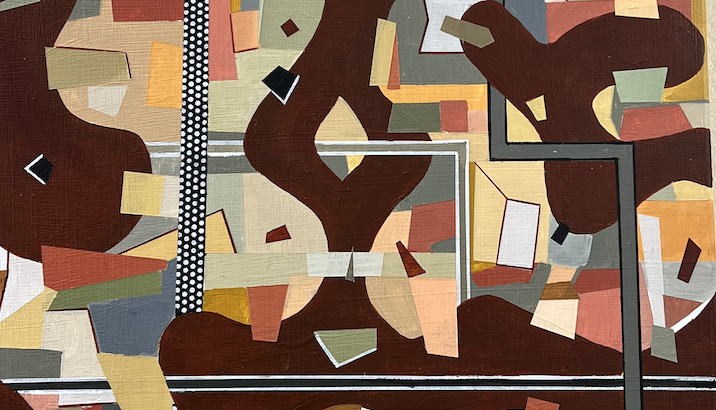Each year, the Prison Creative Arts Project (PCAP) at the University of Michigan organizes an annual exhibition to celebrate the 2D and 3D artwork of incarcerated individuals across the state. This year, the exhibition features works from 360 artists from 25 prisons, forming a stunning mosaic of 625 works— all with different stories to tell and drastically different mediums, but sharing a common passion for art as a mode of self-expression.
The work in the gallery is as diverse as you could imagine within a single gallery space, and far more diverse than you would expect from within prison walls. In terms of incarcerated artists’ resources, few are available; their small budget, when it fails, must be supplemented by any disposable material or item allotted to prisoners, such as toothpicks, tissue paper, ramen, and even blood, which are all used as mediums within this exhibition. The fragility of their resources doesn’t dampen the quality of the artwork but rather imbues it with tenacity as well as a sense of masterful resourcefulness. This exhibition feels alive and buzzing with deep tension, each piece attesting to an emotionality that begs to be expressed even within despair and scarcity.
Condemned by M.J. Van Meter
When I stepped closer to a painting of a skeletal figure, one of many finely detailed works on a gallery wall, I realized that it was not a painting, but delicately carved bar soap with a layer of acrylic paint on top. I imagined all of the hours put into the construction of its curves, likely with a subpar or illegitimate carving tool. This painstaking work stands as evidence of the indomitable desire to create, and its transcendence beyond physical restraints; for incarcerated artists, art is both a beacon of hope and a weapon to break down the dehumanizing stereotypes surrounding imprisonment, rarely just a hobby.
Institutional Lobotomy by LIAM
Much of the art depicts the cruelties of the prison system— the separation of families, the bitter absence of human necessities, and the burden of emotional trauma. Many of the artists work in paint on canvas, although the two-dimensional art ranges from pen drawings to multimedia collages. The pieces most directly confronting incarceration are particularly colorful in their variety of expressions. Some artists took a surreal or even abstract route, inventing grotesque characters to represent their psyche; others pulled striking scenes straight out of reality, painting haunting memories with vivid oils. By contrast, a large portion of the works present placid and euphoric scenes— flowers pressed into ornate designs, loved ones with the sun beaming on their faces, three-dimensional log cabins made from scavenged materials— also expertly crafted. The passion poured into the more joyful work is just as evident as the passion put into the grim work, because, as a typical human response, hope is an essential component of resistance. By depicting some simple yet so out of reach, artists are reminiscing, or dreaming, or simply reclaiming their happiness from the oppressive grip of incarceration. Their labor-intensive work, done purely for the sake of it, is a slap in the face to a system that promotes and thrives off of the squashing of the human spirit. Art is resistance.
A Patient Man by Albert Krakosky
Much of the art is for sale, and some pieces cost as little as $10! The proceeds for sales will return to the artists so they may be used to purchase higher quality art materials. To learn more about PCAP, their mission, and to see (or buy!) the beautiful works of art in the exhibition, visit the gallery in the Duderstadt sometime before April 4th! The gallery is open Tuesday to Saturday from 10am to 7pm, and Saturday to Monday from 12pm to 6pm.
Featured Image: Portrait of Kamilla by Willie Anderson





























